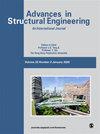Load sensitive control characteristics of a novel two-dimensional pulse width modulated variable mechanism
IF 2
4区 工程技术
引用次数: 0
Abstract
Load sensing technology is a typical hydraulic technology that automatically meets load requirements by adjusting the pressure and flow at the pump outlet. Traditional load sensitive pump control systems rely on variable mechanisms to achieve such flow control characteristics. However, general variable mechanisms have complex structures and poor dynamic performance if frequently adjusted. Therefore, a new variable mechanism, named two-dimensional pulse width modulation rotary valve, is proposed. Different from the pulse width modulation control method of the electronic technology, the two-dimensional pulse width modulation rotary valve conducts secondary distribution of the quantitative pump output in the way of fluid pulse width modulation: the valve core rotates to generate discrete fluid, and the axial sliding of the valve core controls the duty ratio of the discrete fluid. The dynamic balancing of the axial displacement is controlled by feedback pressure to provide a fixed differential pressure for the control valve, achieving that the flow through the control valve is uniquely controlled by the valve opening of the control valve. The principle of the fluid pulse width modulation is first introduced, and then the mathematical model of the proposed variable mechanism and the corresponding system is established. Simulation analysis is implemented. Finally, the effectiveness of the load sensing system controlled by a two-dimensional pulse width modulation rotary valve is verified by the experiment.新型二维脉宽调制变量机构的负载敏感控制特性
负载敏感技术是一种典型的液压技术,可通过调节泵出口的压力和流量自动满足负载要求。传统的负载敏感泵控制系统依靠变量机构来实现这种流量控制特性。然而,一般的变量机构结构复杂,如果频繁调整,动态性能较差。因此,我们提出了一种新的变量机构,即二维脉宽调制旋转阀。与电子技术的脉宽调制控制方式不同,二维脉宽调制旋转阀以流体脉宽调制的方式对定量泵的输出进行二次分配:阀芯旋转产生离散流体,阀芯的轴向滑动控制离散流体的占空比。通过反馈压力控制轴向位移的动态平衡,为控制阀提供固定压差,实现通过控制阀的流量由控制阀的阀门开度唯一控制。首先介绍了流体脉宽调制的原理,然后建立了拟议变量机构和相应系统的数学模型。并进行了仿真分析。最后,通过实验验证了由二维脉宽调制旋转阀控制的负载传感系统的有效性。
本文章由计算机程序翻译,如有差异,请以英文原文为准。
求助全文
约1分钟内获得全文
求助全文
来源期刊

Advances in Mechanical Engineering
Engineering-Mechanical Engineering
自引率
4.80%
发文量
353
期刊介绍:
Advances in Mechanical Engineering (AIME) is a JCR Ranked, peer-reviewed, open access journal which publishes a wide range of original research and review articles. The journal Editorial Board welcomes manuscripts in both fundamental and applied research areas, and encourages submissions which contribute novel and innovative insights to the field of mechanical engineering
 求助内容:
求助内容: 应助结果提醒方式:
应助结果提醒方式:


